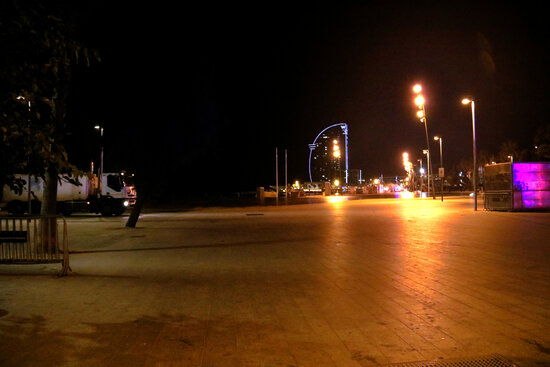Government requests curfew extension and lowering of incidence rate to apply it
Nightly stay-at-home orders currently in towns with 250 fortnightly cases per 100,000 population but authorities lowers level to 125

The Catalan government has requested the courts to prolong the nightly curfew in 148 towns for another week, while also modifying the criteria for the nightly stay-at-home measure to be applied.
Before now, the curfew was only ordered on towns of populations greater than 5,000 with a cumulative incidence rate of more than 250 cases per 100,000 over the past seven days, but the new modification will see the cap set at 125 cases.
In total, the measure will apply to 148 municipalities if approved by the High Court of Catalonia: 125 are due to a 7-day cumulative incidence of more than 125 cases and 23 others because they are surrounded by such towns.
The measures are expected to take effect this Friday for a period of seven days.
Municipalities under curfew
The 125 towns of more than 5,000 population that have an incidence rate above 125 cases per 100,000 residents over the last seven days are the following:
Abrera, Alcarràs, Alcover, Almacelles, Altafulla, Amposta, Anglès, Arbúcies, Arenys de Mar, Arenys de Munt, Argentona, Artés, Badalona, Badia del Vallès, Balaguer, Banyoles, Barberà del Vallès, Barcelona, Bellpuig, Berga, Blanes, Calafell, Calella, Cambrils, Canet de Mar, Canovelles, Cardedeu, Castellbisbal, Castelló d'Empúries, Castell-Platja d'Aro, Celrà, Centelles, Cervelló, Constantí, Corbera de Llobregat, Cornellà de Llobregat, Cubelles, Deltebre, El Prat de Llobregat, El Vendrell, Esparreguera, Esplugues de Llobregat, Figueres, Gavà, Gelida, Girona, Guissona, Igualada, La Bisbal d'Empordà, La Llagosta, La Seu d'Urgell, L'Ametlla de Mar, L'Arboç, Les Borges Blanques, L'Escala, L'Hospitalet de Llobregat, Lleida Lliçà de Vall, Llinars del Vallès, Lloret de Mar, Manlleu, Manresa, Martorell, Masquefa, Mataró, Mollerussa, Montblanc, Montcada i Reixac, Montgat, Mont-Roig del Camp, Móra d'Ebre, Navàs, Olesa de Montserrat, Palafolls, Palafrugell, Palau-Solità i Plegamans, Piera, Pineda de Mar, Premià de Dalt, Premià de Mar, Reus, Ripollet, Riudoms, Roda de Berà, Roda de Ter, Roses, Rubí, Sabadell, Sallent, Salou, Salt, Sant Adrià De Besòs, Sant Andreu de la Barca, Sant Andreu de Llavaneres, Sant Boi de Llobregat, Sant Esteve Sesrovires, Sant Feliu de Codines, Sant Feliu de Guíxols, Sant Feliu de Llobregat, Sant Hilari Sacalm, Sant Joan de Vilatorrada, Sant Joan Despí, Sant Pol de Mar, Sant Sadurní d'Anoia, Sant Vicenç dels Horts, Santa Coloma de Gramenet, Santpedor, Sarrià de Ter, Solsona, Súria, Tarragona, Tàrrega, Terrassa, Tordera, Torelló, Torroella de Montgrí, Tossa de Mar, Ulldecona, Vallirana, Valls, Vic, Vidreres, Viladecans, Vilafranca del Penedès and Vila-Seca.
The 23 additional towns that partially or completely border other municipalities with high incidence rates that will also come under the curfew measure are the following:
Alcanar, Caldes d'Estrac, Castellví de Rosanes, Cerdanyola del Vallès, Cunit, El Papiol, Gimenells i el Pla de la Font, La Canonja, La Palma de Cervelló, La Riba, Malgrat De Mar, Molins de Rei, Pallejà, Sant Carles de la Ràpita, Sant Cugat del Vallès, Sant Jaume d'Enveja, Sant Just Desvern , Sant Llorenç d'Hortons, Sant Quirze de Vallès, Sant Vicenç de Montalt, Santa Susanna, Vilaverd, and Vinyols i Els Arcs.